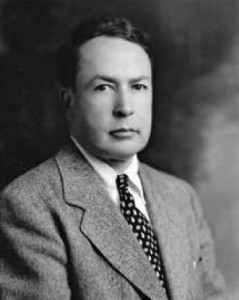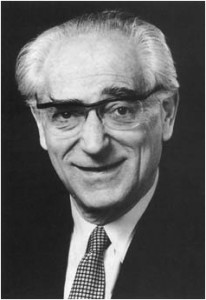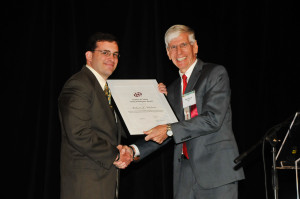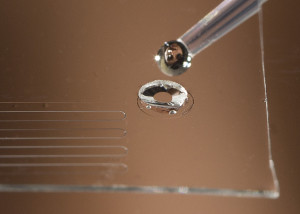
“The first meeting that I attended was held in Bridgeport, Connecticut, in 1928. I went with Dr. W. C. Moore, who had previously persuaded me to become a member. I knew immediately that I was interested in the Society. That interest was not due to the papers that I listened to. There was nothing strictly on electro-organic on the program. I believe that it was due to the enthusiasm of the group, and the fact that I was made to feel that I belonged.”
-Sherlock Swann, Jr.
An article by Richard Alkire in the latest issue of Interface.
Electro-organic chemistry had its champion in Sherlock Swann, Jr. His scholarship, especially his massive bibliographic efforts, served singlehandedly to keep alive the promise and spirit of electro-organic chemistry in the U.S. from the 1930s to the 50s.
He was a charter member of the Electro-organic Division of The Electrochemical Society, formed in 1940, and was the first person to hold the offices of Secretary, Vice-Chair, and Chair of that Division. Beginning with his first ECS meeting in 1928 and continuing throughout his life, he played an active role in the Society, including a term as President in 1958-59. He was the Electro-organic Divisional Editor of the Journal of The Electrochemical Society, 1939-59; the Lifetime Honorary Chair of the Chicago Section; and was made an Honorary Member of the Society in 1974.
Swann was born in 1900 in Baltimore, Maryland, where his family had deep roots and a tradition of service to society. His great-grandfather, Thomas Swann, served as governor of Maryland, as mayor of Baltimore, as President of the Baltimore & Ohio Railroad, and was a leading force in the creation of Druid Hill Park, Baltimore’s first large municipal park. His father served as Baltimore police commissioner and subsequently as Postmaster, and led the reconstruction of downtown Baltimore police commissioner and subsequently as Postmaster, and led the reconstruction of downtown Baltimore and its streets after the Great Fire of 1904.




